Palermo Sicily

Persevere
Pat and Bruce
Fri 14 May 2010 08:21
|
38:08.6N 13:22.2E
We left Lipari around 8:00 for the 80 Nautical Mile
trip to Palermo. While we would have liked to enjoy some sailing having to
cover such distance in a short time forced us to motor the entire way. The
winds were not strong enough to have pushed us along any faster than 3
knots. Along the way a feeding school of dlphins passed by but did not
stay around the boat long. Otherwise the trip was a
non-event.
We chose to go to Marina Villa Igea just north of
the main commercial port in Palermo. This marina is more expensive but
does provide a nicer setting than the commercial port. Just over the
marina is the Villa Igea, built as a hotel many years ago and now is operated by
Hilton.
Palermo is a city that once rivaled the major
cities in Europe. The name comes from the Greek word Panormo meaning "all
port" describing the natural harbor. As with all cities in this area the
prior inhabitants included the Greeks, Carthagians, Romans (254 BC), Byzantines,
Arabs, Normans, French (1250), Spainish (1392). The Greeks in 8 BC had
founded nearly all the existing cities in Sicily. Starting in 832 AD
Islamic Palermo was built on Hellenistic-Roman and Byzantine ruins. Around
1000 AD Palermo became one of the most vital centers in the Western Med.
It had 300 mosques, rich art, gardens, fountains and many statues. Due to
its importance it coined a new monetary coin, the Sicilian gold
tari, replacing the Arab dinar and became the intenational currency.
It was still used till 1866.
The Normans came (1130 AD) and enhanced the
culture and artistic beauty. The first parliment under King Roger was
formed, pre-dating the Magna Carta. Of course ensuing power
struggles continued and a monarchy was established in 1816 and parliment
dissolved. The war of 1860-61 annexed Sicily to the souther Italy Kingdom
of Italy ruled by the House of Savoy. In 1946 regional autonomy was
granted to Sicily and in 1947 the first Sicilian Regional Parliment was
appointed. During WWII Palermo was bombed as part of the invasion of
Sicily by the British and US forces.
Palermo declined greatly after WWII and was badly
influenced by the Mafia, causing many to leave the city. A crackdown in
the 1970s removed much of the control. Today the remains of the past are
still scattered around the city and well worth visits. The current city is
dirty, chaotic, especially driving, industrial, a mix of cultures and safe to
walk around.
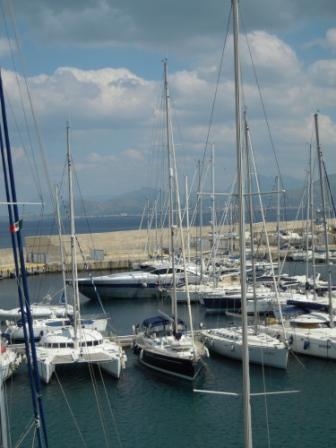 Persevere in Marina Villa Igea between bareboat
charters. Taken from Villa Igea hotel coutyard.
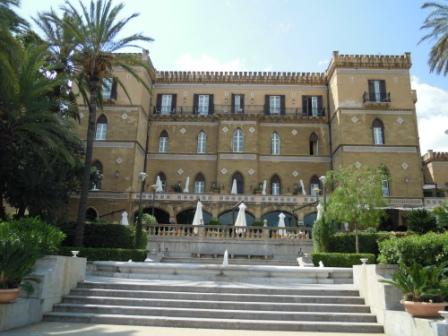 Hotel Villa Igea above the marina
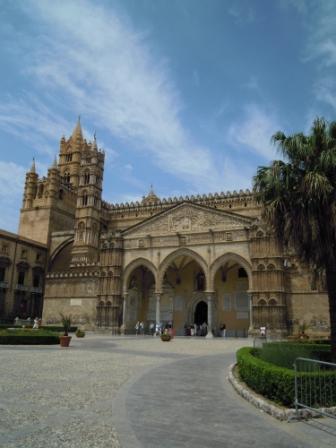 Cathedral built by St George the Great in 603 AD,
changed to a mosque by the Arabs and returned to a Christian church by the
Normans. Several of the Kings are buried here.
 Opera House, Teatro Massimo. Built in
1875-1897 one of the largest in Europe being able to seat 3,200
people.
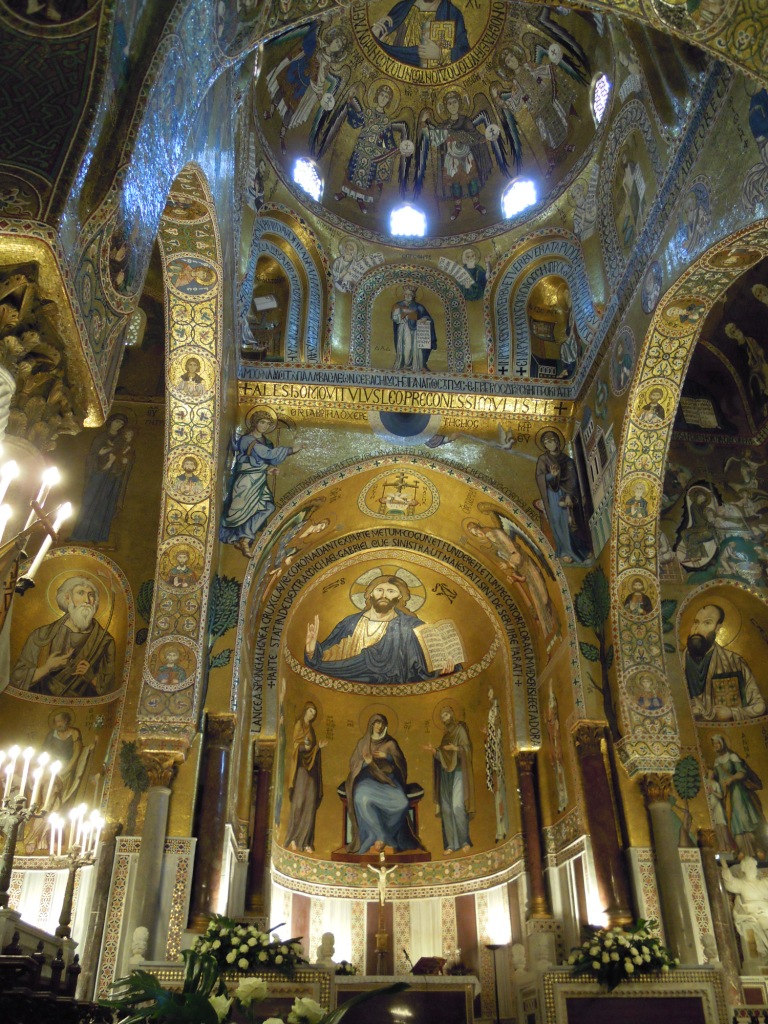 The Palatine Chapel. Built as part of the Royal
Palace in 1130-1143. All the artwork is mozaics 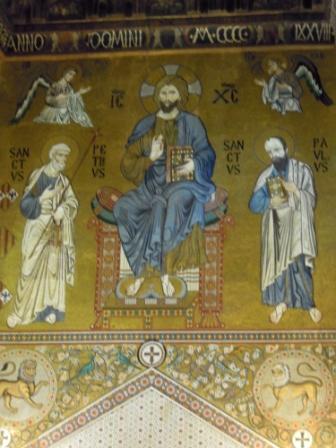 Palatine Chapel
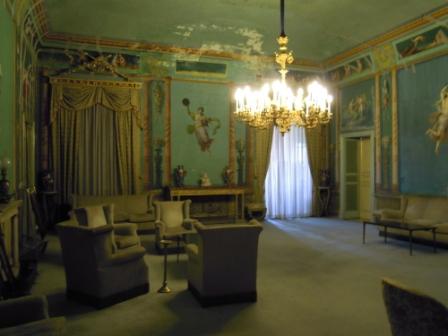 Royal Apartment. One of the many rooms built
during the Norman period.
|